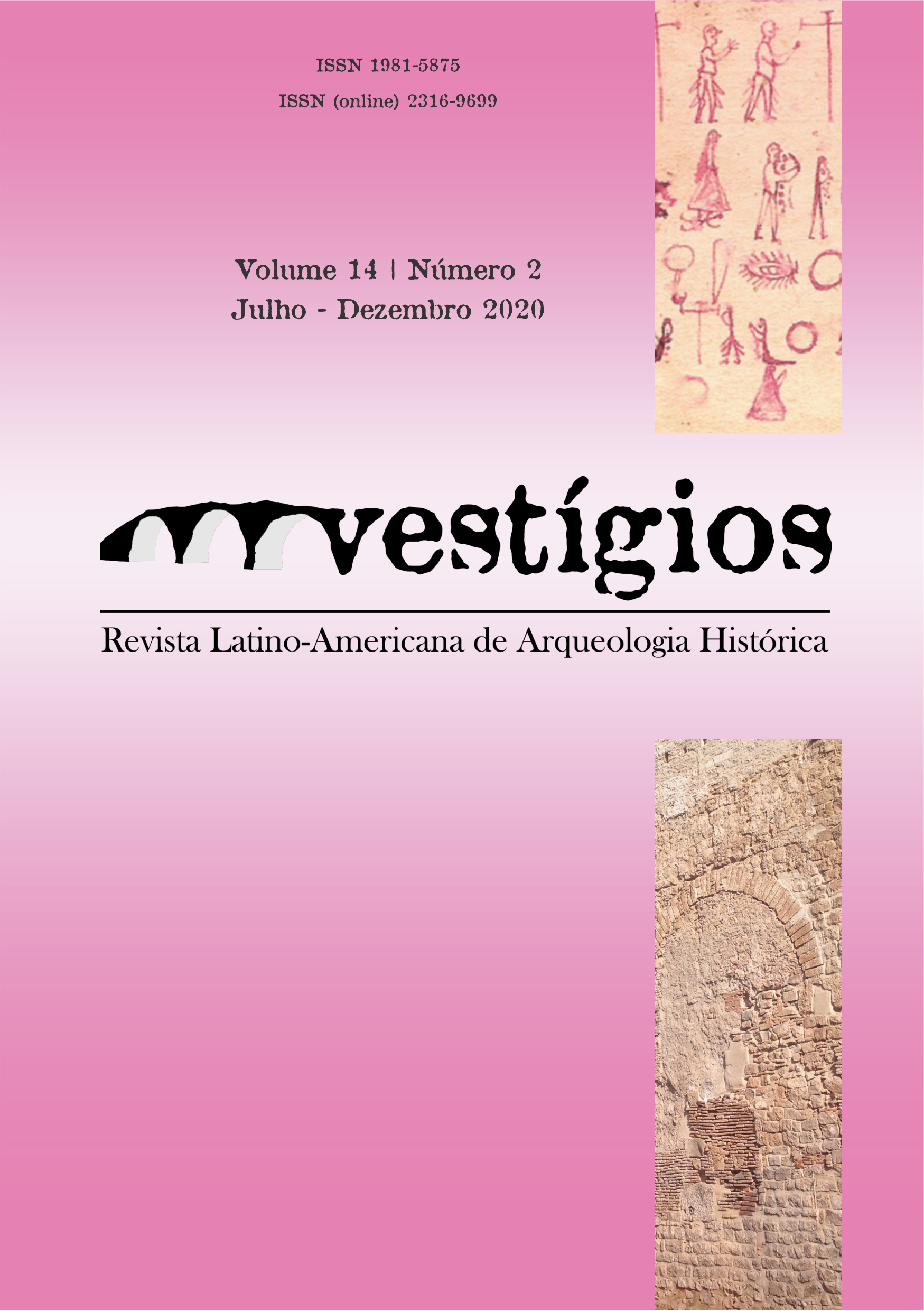Os objetos de ferro nos museus
uma encruzilhada do patrimônio metálico arqueológico
DOI :
https://doi.org/10.31239/vtg.v14i2.26093Mots-clés :
Conservação Arqueológica, artefatos de ferro, conservação curativa, patrimônio históricoRésumé
As coleções arqueológicas metálicas conformam um grupo de objetos, muitas vezes, altamente susceptíveis à deterioração, que demandam a implementação de rigorosas medidas de conservação preventiva e ou procedimentos específicos de conservação curativa, para assegurar a sua permanência no tempo. Essas coleções podem incluir uma grande diversidade de materiais, de variados formatos, tamanhos e funções, que podem ser de ouro, prata, cobre, chumbo, ferro, ou de ligas, como o bronze, latão, alpaca ou peltre. Os artefatos de ferro, devido à sua tendência a voltar ao estado mineral original, são extremamente instáveis, o que explica a sua rápida deterioração e a sua escassa representação nos museus. O Laboratório Multidisciplinar de Investigação Arqueológica da Universidade Federal de Pelotas (Brasil) vem desenvolvendo pesquisas, desde o ano de 2011, sobre a conservação de coleções arqueológicas metálicas. Um dos objetivos dessas pesquisas é o de fornecer às instituições de menor porte e aos colecionistas particulares, tratamentos alternativos para a estabilização de artefatos de ferro. Foram comparados 12 processos interventivos realizados numa coleção de objetos de ferro, dispostos em ambientes diferentes durante 27 meses. Dessa forma, foi possível também contrastar o resultado desses processos sob condições ambientais e de manipulação diferenciadas. Dentre os tratamentos realizados, destacou-se a imersão em parafina pela sua eficiência na estabilização dos objetos, somada a sua facilidade de operação e aos baixos custos dos insumos.
Références
Berducou, M. Cl. (Coord), Adam, J. P., Bailly, M., Bertholon, R., Bossoutrot, A., Chantriaux- Vicard, E., Chavigner, F., Guillemard, D., Krougly, L., De La Baume, S., Meyer, N., Nunes Pedroso, R. & Relier, C. (1990). La conservation-restauration des vestiges archéologiques. Paris: Masson. 469 p.
Bethencourt, M., Gil, M. L. A., Fernández-Lorenzo, C. & Santos, A. (2004, Dec). Aplicación de tratamiento electroquímico a baja intensidad de corriente para la extracción de cloruros en objetos arqueológicos de hierro de procedencia subacuática. Observación de la evolución de fases mineralógicas mediante XRD-Rietveld. Revista de Metalurgia, 40(6). 420-425.
Calvo, A. M. (1997). Conservación y Restauración. Materiales, técnicas e procedimentos: de A a la Z. Barcelona: Ediciones del Serbal.
Campos, G. do N., & Granato, M. (2015). Cartilha de Orientações Gerais para Preservação de Artefatos Arqueológicos Metálicos. Rio de Janeiro: MAST.
CCI - Canadian Conservation Institute. (1989). Tannic Acid Treatment. Ottawa: Canadian Conservation Institute notes 9(5).
CCI - Canadian Conservation Institute. (1997). Recognizing Active Corrosion. Ottawa: Canadian Conservation Institute notes 9(1).
Cronyn, J. M. (2001). The Elements of Archaeological Conservation. Routledge: New York and Canada.
Hamilton, D. L. (1999). Methods of Conserving Archaeological Material from Underwater Sites. Texas: A&M University College Station.
Mourey, W. (1987). La conservation des antiquités métalliques de la fouille au musée. Draguignan: L.C.C.R.A.
National Park Service. (2001). Appendix I: Curatorial care of archaeological objects. In. NPS museum handbook, part I: Museum collections (p. I:1-I:15). Washington, DC: National Park Service.
Pearson, C. (1987). Conservation of marine archaeological objects. London; Boston: Butterworths.
Plenderleith, J. H. (1956). The Conservation of Antiquities and Works of Art: Treatment, Repair and Restoration, London, Oxford University Press.
Rodgers, B. A. (2004). The archaeologist’s manual for conservation: a guide to nontoxic, minimal intervention artifact stabilization. Nova Iorque: Kluwer Academic Publishers.
Selwyn, L. S. (2004). Metals and Corrosion: A Handbook for the conservation Professional, Canadian Conservation Institute, Ottawa.
Téléchargements
Publiée
Numéro
Rubrique
Licence
(c) Copyright Jaime Mujica Sallés, Susana dos Santos Dode, Taciane Silveira Souza, Priscila Poeta Darley, Marina Monteiro Nascimento, Mariana Brauner Lobato, Maria Waleska Siga Peil Martins, Julia Braga dos Santos 2021

Ce travail est disponible sous licence Creative Commons Attribution - Pas d’Utilisation Commerciale 4.0 International.

O trabalho Vestígios - Revista Latino-Americana de Arqueologia Histórica de https://periodicos.ufmg.br/index.php/vestigios/index está licenciado com uma Licença Creative Commons - Atribuição-NãoComercial 4.0 Internacional.
Baseado no trabalho disponível em https://periodicos.ufmg.br/index.php/vestigios/index.
Podem estar disponíveis autorizações adicionais às concedidas no âmbito desta licença em https://periodicos.ufmg.br/index.php/vestigios/index.


